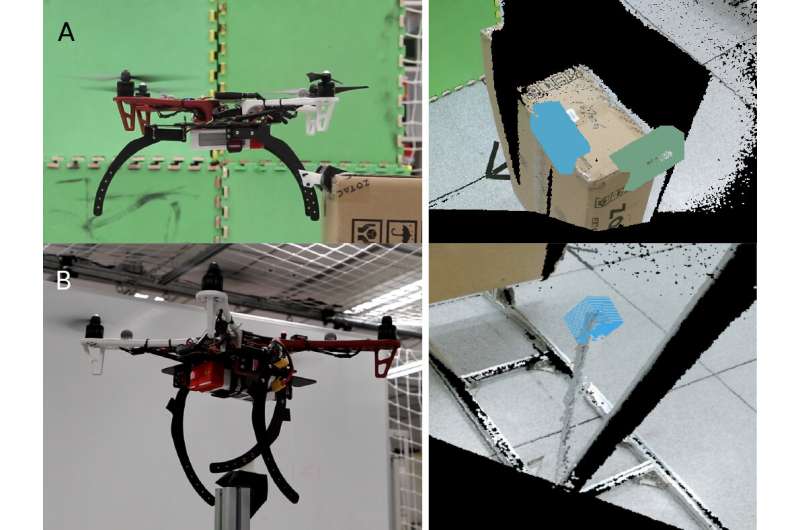March 14, 2019 report
Giving drones better feet so they can 'rest' atop nearby structures

A team of researchers with members from the U.S., China and Sweden has developed a new kind of foot landing structure for drones to allow them to perch on nearby structures. In their paper published in the journal Science Robotics, the group describes their new landing gear and why it could be useful.
One of the most frustrating characteristics of drones is their limited flight time. Battery technology has improved greatly in the past several years, making drones useful. But it is still not enough. Enthusiasts want them to last for hours, not minutes. In this new effort, the researchers have come up with a way to extend battery life that does not rely on battery improvements—instead, they have developed a way to allow a drone to rest during part of its mission so that it only uses its battery in flight.
In their paper, the researchers report being inspired by birds and bats, both of which have impressive landing gear. They noted that a lot of birds tend to take short flights, moving from one elevated location to another. They perch on trees, electrical wires or even chimneys—places that allow them to continue looking down on a scene below them while resting. And bats simply latch onto branches or other objects and hang upside down without fear of falling.
The researchers got to work designing landing gear that could accommodate similar perches. After much work, they came up with a design that allows a drone to land on a flat or semi-flat surface, hang from an object such as a tree limb, or perform a lean-like procedure against an object such as a window sill. The landing gear looks a lot like hawk talons. The researchers also got their drones to find and use resting perches autonomously courtesy of an onboard Xbox One Kinect sensor. All of the landing gear types allowed the drone to deactivate its rotors, saving battery power. The camera aboard could still function if so desired, allowing a drone pilot to continue monitoring conditions below.
Thus far, testing by the team has been restricted to the lab, because some tweaking is still needed to get the drones to land and take off without assistance. But they have confidence that drones will someday soon perch atop tall structures just like birds.
More information: Kaiyu Hang et al. Perching and resting—A paradigm for UAV maneuvering with modularized landing gears, Science Robotics (2019). DOI: 10.1126/scirobotics.aau6637
© 2019 Science X Network




















